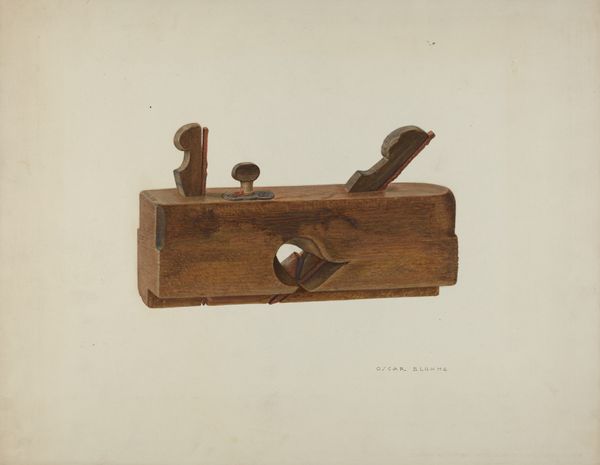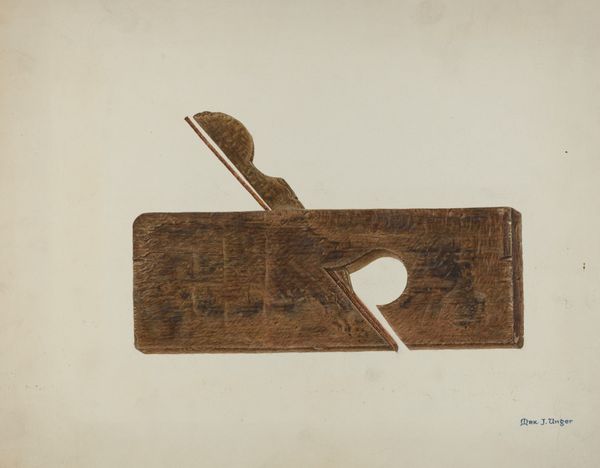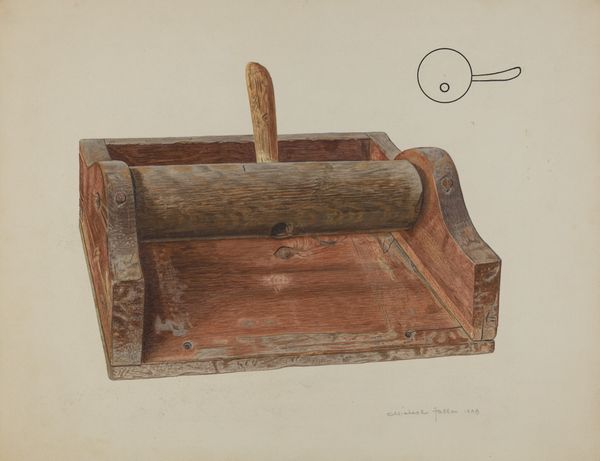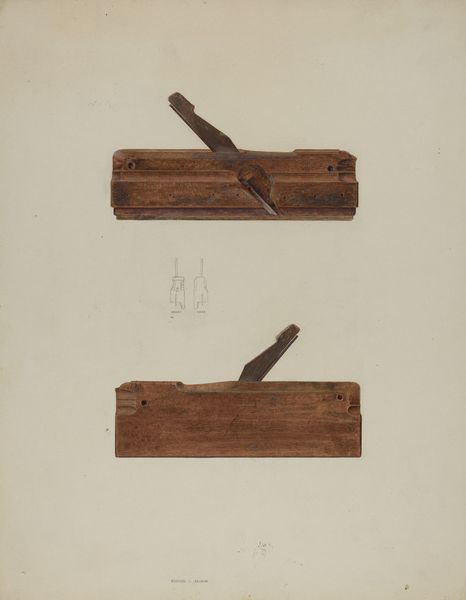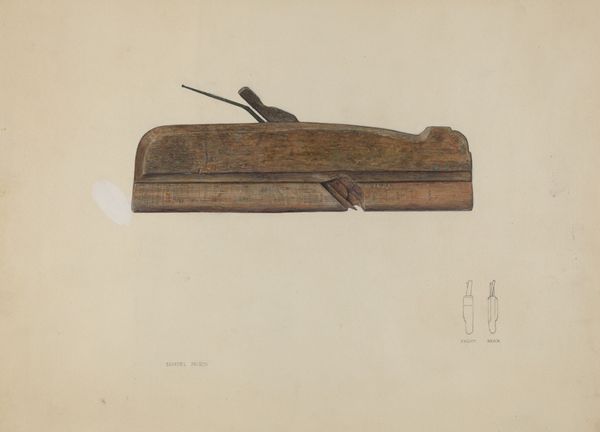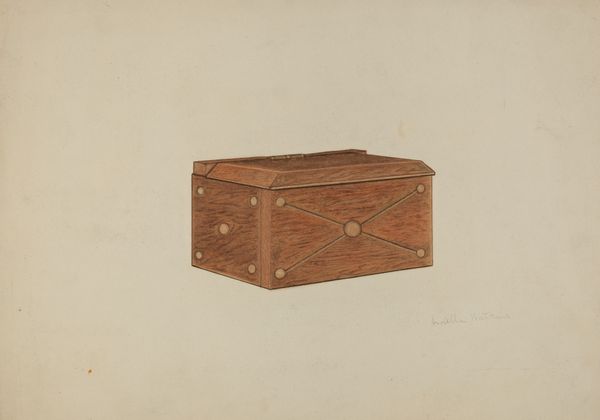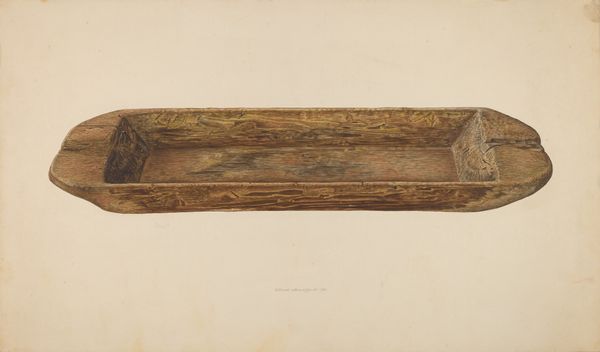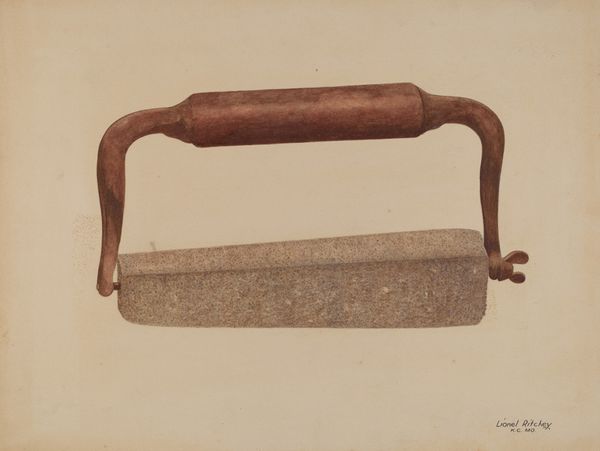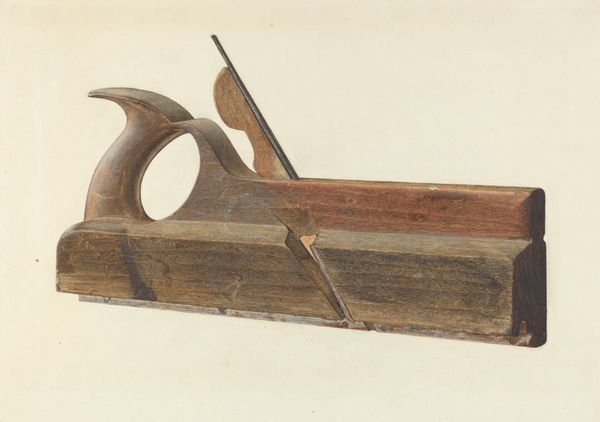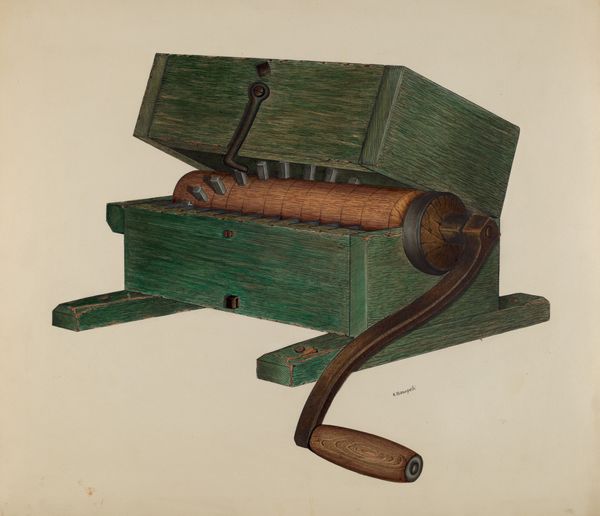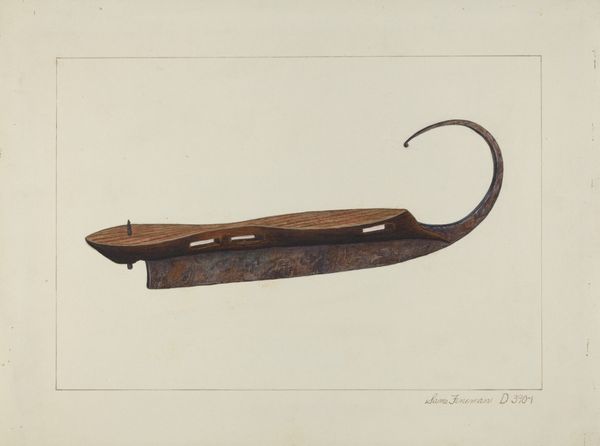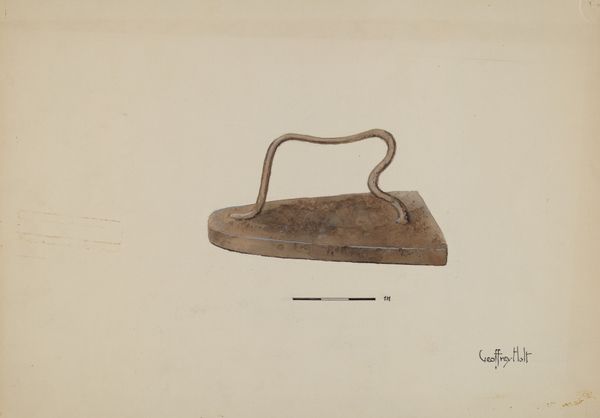
drawing
#
drawing
#
charcoal drawing
#
watercolor
#
realism
Dimensions: overall: 35.7 x 45.8 cm (14 1/16 x 18 1/16 in.) Original IAD Object: 3 3/8" high; 9 1/2" long
Copyright: National Gallery of Art: CC0 1.0
Editor: Here we have Max Unger’s "Bead Plane," a watercolor and charcoal drawing from 1939. It’s surprisingly captivating for a picture of a woodworking tool, it has this real sense of... presence. What do you see in this piece? Curator: I see an interesting intersection of the artist and the everyman. Unger is making a fine art study of an object from daily life, potentially elevating it. Who would have encountered this work, and where? This was during the Great Depression and it's made under the Works Progress Administration. So what statement does it make when the government commissions art of tools like this? Editor: It feels… celebratory in a way? A celebration of the working class? Curator: Exactly. This was during a period when American art and identity were being explored and defined. These artists were consciously turning away from European trends. Everyday objects, regional subjects...they all played a part in the new American art narrative. What do you think of the composition? Editor: It's simple, but really highlights the texture and craftsmanship of the plane itself. The shadows give it dimension. Curator: Right, but consider how Unger is presenting labor. This isn't a heroic scene of a worker, it’s a quiet, almost reverent portrait of the tools themselves. This artistic choice speaks volumes about the value being placed on labor and craftsmanship. Do you see that scrap of wood in the bottom left? Editor: Yes! I hadn't paid much attention to that until you pointed it out. Is it supposed to be representative of Unger? Maybe a carpenter trying to cut and refine, in parallel with the artist's job of depiction? Curator: That could be the case. This art highlights the process of creation and celebrates that which is often taken for granted. And perhaps to look closer, and understand the context in which it was produced is crucial in how we see the world, today. Editor: I never considered how something as simple as this could be connected to broader social movements. Thank you for opening my eyes! Curator: And thank you! It’s enriching to discuss such thought-provoking topics, today.
Comments
No comments
Be the first to comment and join the conversation on the ultimate creative platform.
